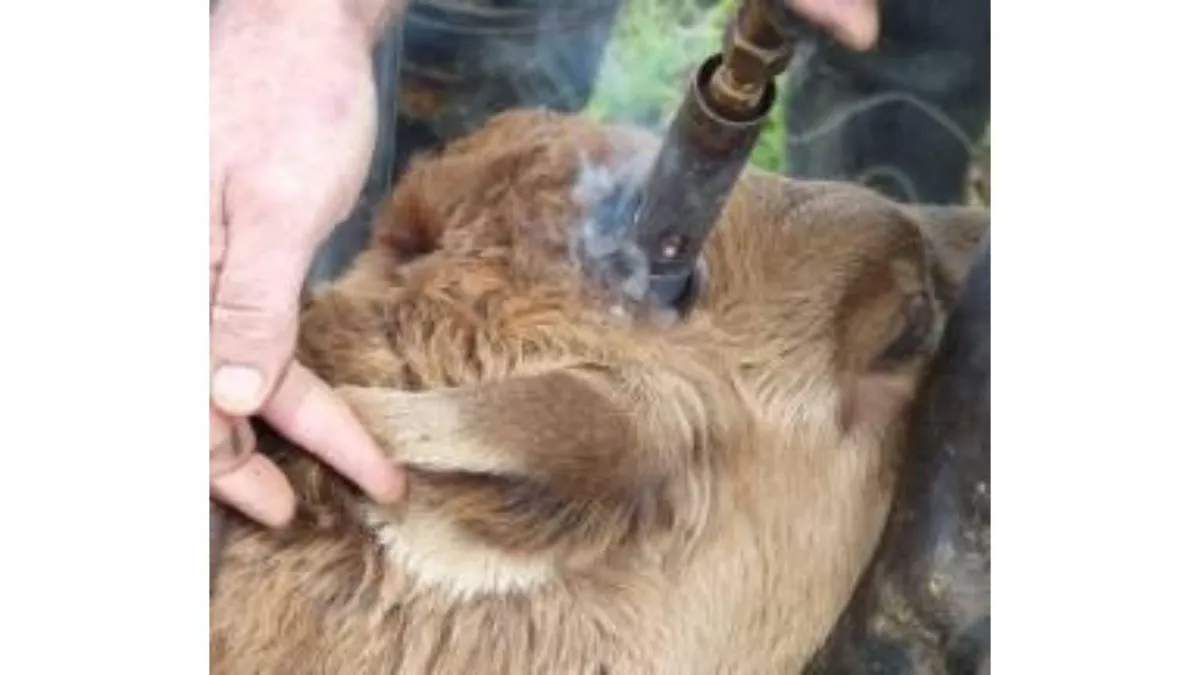
Disbudding - make it humane
Disbudding is the removal of the developing horn base in very young animals. It's a routine farm procedure, particularly in dairy cattle and goats, to prevent horn growth. While it’s done for practical and safety reasons, it can be extremely painful and must be carried out with appropriate pain relief and care.
Why Disbudding Matters
Horn buds begin to form around birth or within a few days. Disbudding at this early stage is far more humane than dehorning older animals, which involves more restraint, greater bleeding, higher risk of infection, and significant stress for the animal.
Under New Zealand law, disbudding and dehorning must now be done with veterinarian-authorised pain relief.
Since 1 October 2019, it is illegal to disbud or dehorn cattle of any age without using a local anaesthetic authorised by a vet.
Since May 2021, pain relief is also legally required when disbudding or dehorning goats.
In both cases, failure to comply can result in prosecution and significant fines.
Veterinarians strongly recommend using a combination of local anaesthetic, non-steroidal anti-inflammatory drugs (NSAIDs) for lasting pain relief, and sedation where appropriate. These measures reduce stress and help animals recover faster.
Disbudding Calves
All hand-reared calves should be disbudded unless they are naturally polled
Horns can injure other animals and pose a safety risk to handlers, especially in confined spaces
Check calves from a few days of age for developing horn buds
Disbudding should be done as soon as small hard caps are felt
The ideal time is between 4 and 6 weeks of age
A vet must administer pain relief before the procedure
Disbudding Goat Kids
While fibre and angora goats are not usually disbudded, it is common practice in dairy breeds
Horned goats can injure each other and get caught in fences
Male kids often develop horn buds earlier and faster than calves
Begin checking daily from birth
The ideal window is between a few days and 2 weeks old
As with calves, a vet must provide authorised pain relief before disbudding
The Preferred Method is Hot Iron with Pain Relief
The most effective and humane technique is the use of a circular gas or electric cautery iron to cauterise the horn bud and surrounding tissue.
Pain relief is mandatory for both calves and kids
The procedure must be performed quickly and carefully, using firm but gentle restraint
The hot iron should not be pressed too hard or held on too long, especially in goat kids
Goat kids have much thinner skulls than calves and are at greater risk of burns or brain injury
If a second application is needed because the first burn was incomplete, allow the tissue to cool before reapplying. In kids, the horn bud is more diffuse, so a ring of tissue approximately 5mm around the horn base must be cauterised to prevent regrowth or scurs.
Caustic Paste is Not Recommended
Although still available, caustic paste disbudding is not recommended. These chemical pastes can easily cause accidental burns to other animals, especially mothers' udders, or to handlers. In wet weather, the chemicals can run down the face and burn eyes or lips.
Caustic paste is not considered a humane or safe option and should not be used.
Scoop Disbudding Should Be Left to Vets
A scoop tool physically gouges out the horn bud and surrounding tissue. This method causes more bleeding and increases the risk of infection. It’s generally not suitable for goat kids and should only be used by a veterinarian in calves if absolutely necessary.
The Most Humane Option
The best choice for both the animal and the handler is to have a veterinarian carry out the disbudding.
Vets use a cautery iron with mandatory local anaesthetic
NSAIDs and sedation can also be provided to minimise pain and stress
Multiple procedures such as castration, tagging or teat removal can often be done at the same visit under appropriate pain relief
The small additional cost provides a much safer and kinder experience for the animal
Want to feel confident you're doing things right?
Our What You Need to Know Before You Keep Livestock courses cover essential procedures like disbudding, castration and tagging, with clear guidance on legal responsibilities and animal welfare.

